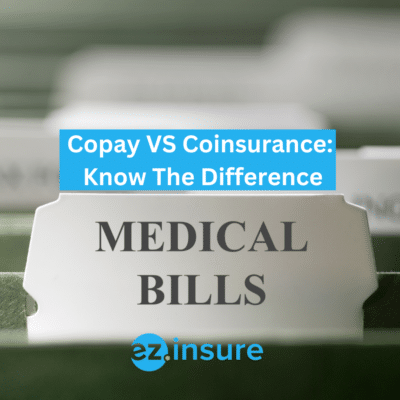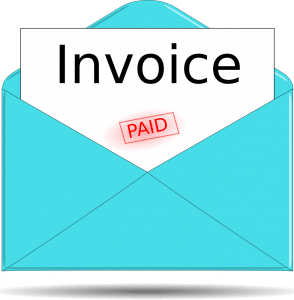
What Are Copays?
A copay is a predetermined amount of money you must pay when you use a medical service at the point of service. Health insurance policies typically specify copayment amounts in advance, and the amount will be different for each type of service. Examples of services that might require copayments include visits to your primary care physician, appointments with a specialist, prescriptions drugs, and emergency room visits. You might, for instance, have to pay $20 each time you see your primary care physician.
After you pay your copayment for a covered service, the insurance company will often pay for the rest. Especially for preventive care. For example, your annual check-up is a service your plan covers. So, you will only be responsible for your copay in this case. You should always check your plan’s benefits summary for specifics. But in general, copays are not included in the calculation of your maximum out-of-pocket costs.
What Is Coinsurance?
Most health insurance plans require that you pay coinsurance, or a percentage of the cost of care. With most plans, you’ll first have to meet your annual deductible. Then your insurance company will begin to cover your care, but you will have to split the cost. Your coinsurance share will depend on your plan, but you might have to pay 20% of each bill, for example.
In addition, the coinsurance percentage you’ll have to pay may vary depending on the type of medical treatment you receive. For example, you might have to pay a different amount of coinsurance for things like office visits, tests, and medications.
And, if you have a preferred provider organization (PPO) plan, you’ll most likely have to pay different amounts of coinsurance. Depending on whether or not the healthcare provider you see is in your plan’s network. For example, coinsurance for a primary care physician in your network could be 20%, while coinsurance for a primary care physician outside of your network could be 75%. That means you can lower your out-of-pocket expenses by trying to get care from in-network providers whenever possible.
How Much Should You Expect to Pay in Coinsurance?
You won’t know exactly how much you’ll end up paying in coinsurance each year, but you can estimate your out-of-pocket costs by thinking about how much care you anticipate needing. The coinsurance you pay on that care will be a chunk of your out-of-pocket expenses, in addition to your monthly premium and your annual deductible.
Your share of your medical costs will be determined by the type of plan you choose. You can choose from Bronze, Silver, Gold, or Platinum plans, each of which will require that you pay a different percentage of your medical costs: 
- Bronze – 40/60, You pay 40% while your insurer pays the remaining 60%
- Silver – 30/70, 30% is your responsibility while your insurer pays 70%
- Gold – 20/80, you pay 20% and your insurer covers 80%
- Platinum – 10/90, your insurer pays 90% while you cover only 10%
How Copayments and Copays Work
As pointed out above, a copay is a predetermined amount that you have to pay for a covered service at the point of service, but coinsurance is the percentage of the total bill that you are responsible for. Both are some of the out-of-pocket costs of health insurance, but they function very differently. The difference between a copay and coinsurance can be broken down as follows:
- Copayments are a set price you pay for services. You are responsible for the copays before and after you’ve met your deductible
- Coinsurance is a percentage of your medical bills you have. Coinsurance is only charged after you’ve met your deductible for the year.
What this means is that a $20 copay will always be $20. But your 20% coinsurance fee will vary with the price of the service. And these costs, as always, will vary depending on the plan you choose. In general, though, your copayments and coinsurance will be lower if you choose a plan with higher premiums.
Copay and Coinsurance Example
To make things a little clearer, here’s a further example of how copays and coinsurance work: Let’s say your health insurance plan has a $3,000 deductible, $50 copays for specialists, 80/20 coinsurance, and a $6,000 out-of-pocket maximum on an individual plan (and you have no dependents covered by your plan). This $6,000 maximum means that once you pay that amount in covered medical expenses in a given year, your insurance company will begin to cover everything, and you will no longer have to pay coinsurance.
Now let’s say you go in for your free annual checkup (a preventative service) and bring up the fact that your shoulder has been bothering you lately. Your primary care physician refers you to an orthopedic surgeon for further evaluation. When you see this specialist, you will pay your $50 copay at the point of service.
The consulted specialist suggests an MRI to evaluate your shoulder pain. The price of the MRI is $1,500, and since you haven’t met your deductible for the year, you will have to pay the whole bill for this test. The MRI finds that you have torn your rotator cuff and will require surgery to repair it. The price tag for this operation is $7,000. After spending $1,500 on the MRI, you will have to pay $1,500 more in order to meet your $3,000 deductible before your insurance will cover any of the surgical costs. That leaves $5,500 to pay for the surgery, and since you have an 80/20 plan, your 20% coinsurance payment would be $1,100.
With meeting your deductible and paying your coinsurance and copayment, the total cost of repairing your torn rotator cuff would be $4,150. But remember, in this scenario, your plan has a $6,000 out-of-pocket maximum, which you would be close to meeting after this surgery.
What Should You Look for in a Plan?

For example, if you’re looking at a plan with lower monthly premiums, you’re most likely going to have a higher coinsurance percentage. Take two health care plans with different monthly premiums of $200 and $450 as an illustration. These two plans may have 30% and 20% coinsurance for ER visits, respectively. So, when looking at plans with lower premiums, you should always consider that your out-of-pocket expenses, including your coinsurance payments, might be higher.
And when it comes to the copayments included in the plans that you are looking at, keep in mind that copayments are typically not applied toward meeting deductibles. You should look into plans with lower copays if you anticipate spending a lot of money on prescription drugs. Or making multiple trips to the doctor each year.
In-Network vs Out-Of-Network
As mentioned above, some plans have different deductibles, copayments, and maximum out-of-pocket expenses if you see an in-network healthcare provider than if you see out-of-network providers. This is because doctors and hospitals that are part of your plan’s network have agreed to provide you with care at reduced costs.
These reduced costs mean that it’s important to seek care from a provider who is part of your insurance’s network if at all possible. And when looking at plans, make sure your preferred doctors and hospitals are included in the plan’s network. If you find that you are frequently seeing out-of-network providers with the plan you have. You might want to make a change to your plan during the next Open Enrollment Period. Speak to an EZ agent about your options.
FAQs
-
Does coinsurance apply before I meet my deductible?
No, it doesn’t. If you have a 20% coinsurance, they will only begin to cover their 80% after you’ve met your deductible.
-
Do all health insurance plans have copays and coinsurance?
No. You may not be required to pay a copayment for certain medical services with some plans. These plans, however, typically have higher monthly premiums. And there are also catastrophic health plans, for example, with very high deductibles and no coinsurance at all.
-
Are copays and coinsurance tax deductible?
If your out-of-pocket medical expenses exceed 7.5% of your AGI, you may be able to claim a tax deduction for all of your medical expenses. Including your copays and coinsurance. The excess of your healthcare costs over 7.5% of your adjusted gross income is tax deductible.
-
Do copayments and coinsurance count toward out-of-pocket maximums?
Your out-of-pocket maximum includes not only your deductible, but also any copays or coinsurance payments you may have made. Your regular premium payments don’t count toward your maximum.
-
Is it better to have a higher or lower coinsurance percentage included in your plan?
A lower coinsurance percentage means you’ll have to pay less out-of-pocket for covered medical services. But if you have a lower coinsurance percentage, you might have a higher deductible and premiums.
Conclusion
When you are searching for a health insurance plan, the plan descriptions will always include the premiums (the amount you pay on a monthly basis to maintain the plan), deductibles, copays, coinsurance, and out-of-pocket maximums. Pay close attention to all of these costs, not just the plan’s premiums. So you can get a feel for the true amount you’ll be paying for your healthcare.
If you are generally healthy, a cheaper plan that has higher deductibles could work for you. However, if you expect to have significant healthcare costs, it may be worth it to pay higher monthly premiums for a plan that will cover more of those costs.
EZ Can Help
If you need help finding the right plan for you, EZ.Insure is here to help. We can quickly evaluate all of the health insurance plans in your area. Your personal agent will help you sort through the various plans available to you. And explain all of the costs that come with each one. And the best part is that all of our services are completely free! To get your free quotes, simply enter your zip code in the box below, or give us a call at 877-670-3557.





